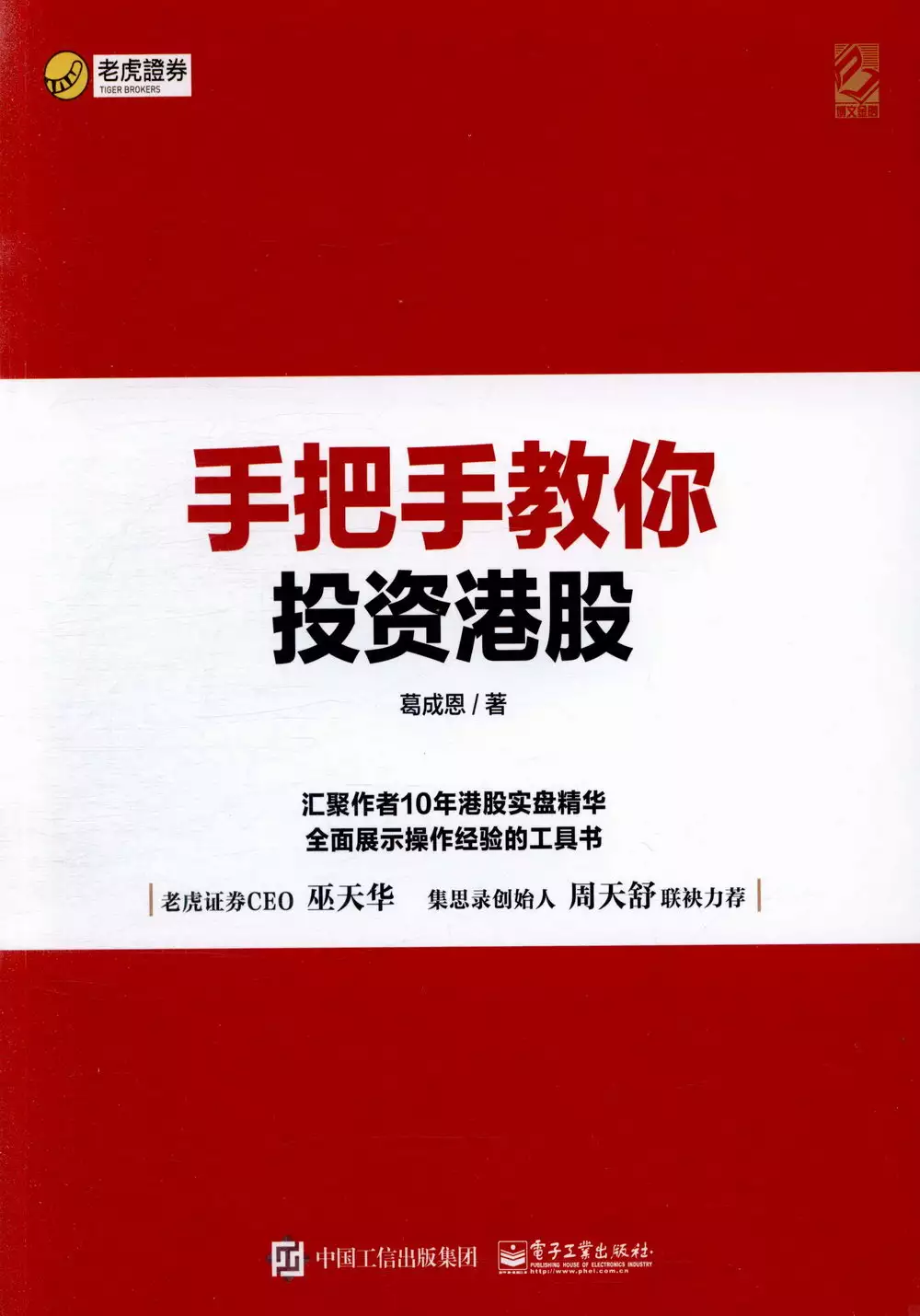ADR HK的問題,我們搜遍了碩博士論文和台灣出版的書籍,推薦葛成恩寫的 手把手教你投資港股 可以從中找到所需的評價。
臺北醫學大學 藥學系臨床藥學碩士在職專班 王莉萱所指導 施麗雅的 探討口服抗真菌藥物引起肝損傷(DILI)的風險 (2020),提出ADR HK關鍵因素是什麼,來自於口服抗真菌藥物引起肝損傷。
而第二篇論文臺北醫學大學 生醫材料暨組織工程研究所博士班 白台瑞所指導 吳玉雯的 運用人類血小板及血小板微粒作為抗癌藥物傳遞系統之研究 (2020),提出因為有 Platelet、Tissue factor、Cancer、Doxorubicin、Platelet extracellular vesicles、Drug delivery system、Extrusion、Freeze and thaw、Sonication的重點而找出了 ADR HK的解答。
手把手教你投資港股

為了解決ADR HK 的問題,作者葛成恩 這樣論述:
在A股如魚得水的很多投資者,都想到美股、港股是展示一下自己的炒股或投資技巧。但到了港股或美股上,同樣的方法卻屢屢受挫。因為不同的市場規則,以及完全不同的投資人群。因此,才有了本書,這基於作者10多年的港股投資經驗,以及其做投資網站時和眾多投資者交流分析說得,本書中不僅包含基礎入門知識、法規技巧,更有投資策略、市場風險與案例解析,可以幫助用戶快速摸清香港市場的特點。
ADR HK進入發燒排行的影片
上集提到中資ADR(美國預託證券)退市風波,今集 Alex 與你拆解 ADR大有奧祕,甚至有可能預測港股反應?
【第13集主題:美國預託證券(ADR)是甚麼?】 00:00
00:10 美國預託證券(ADR)是甚麼?
00:58 為何大型藍籌只在美國場外交易掛牌?
01:54 ADR可否預測港股升跌?
03:14 CDR(中國預託證券 )、HDR(香港預託證券 )數量為何相對少?
04:22 ADR趨勢如何?
? 鎖定睿富財經頻道,開創富足自由人生!
主持:天窗文化集團 CEO 李偉榮
蕭少滔(Alex)簡介:
擁有超過二十年企業融資專業經驗,涵蓋廣泛的投資銀行以及上市公司的管理工作。先前為星星地產(1560.HK)的獨立非執行董事,以及中國首控集團有限公司(1269.HK)之投資銀行部門董事總經理。另外曾於香港著名投資銀行主管資本市場部門業務,包括星展亞洲以及招商證券。企業管理方面,蕭先生曾任職越秀集團資本經營部副總經理,參與2005 年全球首個中國房託越秀房地產信託基金(405.HK)的上市工作,是資產證券化的專家、並出任越秀集團的各上市公司投資者關係主管。
蕭先生在香港中文大學工商管理系獲得國際工商管理學士學位,其後獲取法國政府獎學金負笈法國深造,取得法國巴黎高等商業學院頒發之金融碩士學位。
======================================================
【蕭少滔著作推介】
➤ 全球有租收—善用REITs靈活投資優質物業:https://bit.ly/2YsPo2B
➤ 世代之戰:https://bit.ly/3nGx9Ry
======================================================
【更多推薦影片】
➤ 價值投資如何達成財務自由? | 嘉賓:簡志健(紅猴)、洪龍荃:https://youtu.be/-KM-G9IdblE
➤ 剖析2021年必看3大版塊 | 嘉賓:黃國英:https://youtu.be/1Um50RmXyEE
➤ 新書揭視中國債務危機 | 嘉賓:張化橋:https://youtu.be/7gDzIgHFd6M
======================================================
【追蹤 WealtHub睿富,即可獲得最新財經金融資訊】
Facebook: https://www.facebook.com/wealthub.hk
Instagram: https://www.instagram.com/wealthub18/
YouTube: https://youtube.com/c/睿富財經頻道WealthubC...
Website: http://www.wealthub.hk/
投資涉及風險。本節目純為嘉賓個人意見分享,不構成任何投資招攬或建議。本節目對閣下因援引有關資料所引致的任何損失或損害概不負責。
#Wealthub #致富解碼 #iBanker見聞錄 #睿富財經頻道#蕭少滔 #iBanker #投資銀行 #投行
探討口服抗真菌藥物引起肝損傷(DILI)的風險
為了解決ADR HK 的問題,作者施麗雅 這樣論述:
背景藥物引起肝損傷(drug-induced liver injury, DILI)或肝毒性,雖然為不常見的疾病,然一旦發生,可能會導致嚴重的後果。對病人、整個醫療照護體系產生衝擊,對製藥業產生影響,也是導致藥品下架回收、許可證撤銷常見的原因,其嚴重性可見一斑。口服抗真菌藥物主要用於預防及治療真菌感染,臨床上廣泛被應用,尤其是一些免疫功能低下的病人更需長期使用。我國於1997年曾發生多起使用抗真菌藥引發肝損傷事件,造成醫療糾紛及輿論探討。儘管在此期間發表了一些關於口服抗真菌藥引起的肝損傷的研究,且近年來已經發布了一些新的抗真菌藥,但很少有相關的更新分析和研究。有鑑於此,本研究為探討臺灣地區民
眾使用口服抗真菌藥物治療而引起肝損傷相關之風險。研究方法本研究是使用衛生福利部衛生福利資料科學中心(Health and Welfare Data Science Center, HWDC)提供的2百萬人抽樣檔,以2000年至2016年資料所進行的回溯性世代研究。將使用口服抗真菌藥物的病人定義為實驗組,對照組則為未使用口服抗真菌藥物的病人,並使用Cox比例風險模式(Cox proportional hazard model) 統計各組發生肝損傷的風險及相關危險因子的分析。研究結果於265,221位使用口服抗真菌藥物的病人中,有2,655位為疑似藥物引起肝損傷的病人,其中有105位為符合藥物引起
肝損傷定義的病人,進一步分析使用口服抗真菌藥物引起肝損傷的病人(實驗組),相較未使用口服抗真菌藥物引起肝損傷的病人(對照組),風險比為1.76 (95% CI, 1.28-2.42; p
運用人類血小板及血小板微粒作為抗癌藥物傳遞系統之研究
為了解決ADR HK 的問題,作者吳玉雯 這樣論述:
Background:Human platelets (PLTs) and PLT-derived extracellular vesicles (PEVs) released upon thrombin activation express receptors that interact with tumour cells and, thus, can serve as a delivery platform of anti-cancer agents. Drug-loaded nanoparticles coated with PLT membranes were demonstrate
d to have improved targeting efficiency to tumours, but remain impractical for clinical translation. PLTs and PEVs targeted drug delivery systems (TDDS) should facilitate clinical developments if clinical-grade procedures can be developed.Materials and methods:PLT from therapeutic-grade PLT concentr
ate (PC; N > 50) were loaded with doxorubicin (DOX) and stored at -80 °C (PLT-DOX) with 6% dimethyl sulfoxide (frozen PLT-DOX). Surface markers and PLT functional activity of frozen PLT-DOX was confirmed by Western blot and thromboelastography (TEG), respectively. The morphology of fresh and frozen
PLT and PLT-DOX was observed by scanning electron microscopy (SEM). The content of tissue factor-expressing cancer-derived extracellular vesicles (TF-EV) present in conditioned medium (CM) of breast cancer cells cultures was measured. The drug release by fresh and frozen PLT-DOX triggered by various
pH and CM was determined by high performance liquid chromatography (HPLC). The cellular uptake of DOX from PLTs was observed by deconvolution microscopy. The cytotoxicities of PLT-DOX, frozen PLT-DOX, DOX and liposomal DOX on breast, lung and colon cancer cells were analyzed by CCK-8 assay.We compa
red extrusion, 3 cycles of freeze and thaw (freeze-thaw), sonication, and incubation to produce PEVs from human cryopreserved PLTs. The morphology of PEVs measured by SEM. The size distribution and the amount of particles in isolated PEVs analyzed by dynamic light scattering (DLS) and nanoparticle t
racking analysis (NTA). In addition, PEVs subjected to extrusion, freeze-thaw and sonication were loaded with anti-cancer drug, DOX, by incubation for 24 h and purification with chromatography to remove unbound DOX (PEV-DOX). The encapsulation efficiency of DOX in PEVs measured by fluorospectrometry
. The surface markers and procoagulant functional activity of PEV-DOX was confirmed by Western blot and MP-PS activity assay, respectively. The cellular uptake of PEVs by three breast cancer cell lines including MCF7, MDA-MB-231 and MCF7/ADR measured by flow cytometry and ImageXpress Pico Automated
Cell Imaging System. The cytotoxicities of PEV-DOX, DOX and liposomal DOX on breast cancer cells were analyzed by CCK-8 assay.Results:15~36 × 106 molecules of DOX could be loaded in each PLT within 3 to 9 days after collection. The characterization and bioreactivity of frozen PLT-DOX were preserved,
as evidenced by (a) microscopic observations, (b) preservation of important PLT membrane markers CD41, CD61, protease activated receptor-1, (c) functional activity, (d) reactivity to TF-EV, and (e) efficient generation of PEVs upon thrombin activation. The transfer of DOX from frozen PLTs to cancer
cells was achieved within 90 min, and stimulated by TF-EV and low pH. The frozen PLT-DOX formulation was 7~23-times more toxic to three cancer cells than liposomal DOX.Morphology of PEVs by SEM was spheroid. Approximate 496 PEVs/PLT and 493 PEVs/PLT could be generated by extrusion and sonication, c
ompared to 145 PEVs/PLT and 33 PEVs/PLT by freeze/thaw and incubation, respectively. The encapsulation efficiency of DOX into PEVs treated with freeze-thaw (11%) was higher than extrusion (11%) and sonication (13%) after incubation followed by purification by Sephadex G-25 chromatography measured by
fluorospectrometry. Western blot evidenced that DOX loading did not influence expression level of PEV membrane surface markers (CD41, CD42a, CD62P, CD9 and CD63). The population sizes and concentration of PEVs and PEV-DOXs by DLS and NTA was 120-150 nm and 1.2-6.2 x 1011 particles per mL, respectiv
ely. In addition, drug loading also did not increase the risk of procoagulant activity. PEVs uptake analyzed by flow-cytometry showed strong internalization by drug resistant breast cancer cell lines, MCF7/ADR, compared to MCF7 cells and MDA-MB-231 cells. Cytotoxicity data showed that higher anti-ca
ncer activity of PEV-DOX on MCF7/ADR cells than other two breast cancer cells.Conclusions:Frozen PLT-DOX and PEV-DOX can be prepared under clinically compliant conditions preserving the membrane functionality for anti-cancer therapy. These findings open perspectives for translational applications of
PLT-based DDS.